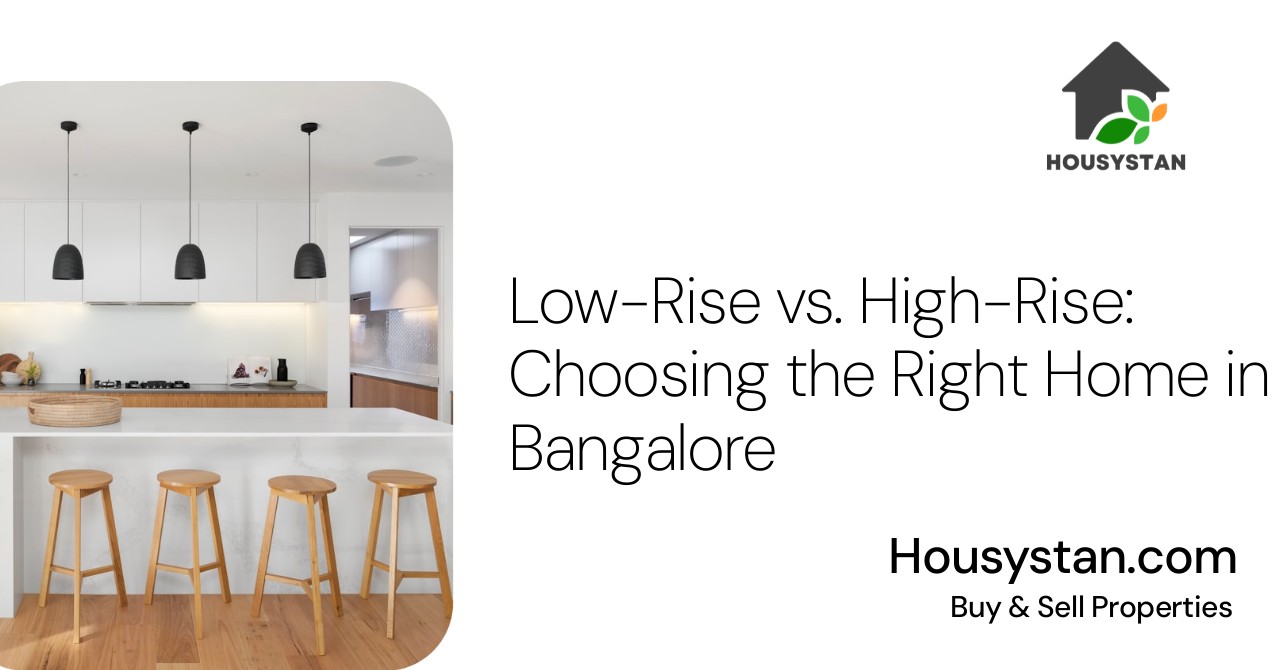Low-Rise vs. High-Rise: Choosing the Right Home in Bangalore
Read latest blogs and articles from Housystan

The Information mentioned here was last updated on:
31/12/2025Bangalore, known as the Silicon Valley of India, offers a vibrant real estate landscape with diverse residential choices. Among these, low-rise and high-rise apartments stand out as popular options for homebuyers. Making the right decision between a low-rise and a high-rise property in Bangalore involves considering several factors, including location, lifestyle preferences, amenities, privacy, and long-term investment value. Understanding the key differences can help you select a home that perfectly aligns with your needs in this dynamic city.
Low-Rise Apartments in Bangalore
Low-rise buildings typically consist of two to four floors and are often found in quieter neighborhoods such as Jayanagar, Indiranagar, and Koramangala. These residential complexes usually offer a more intimate community feel, with fewer residents per block. Homebuyers who value tranquility, personalized spaces, and easy access may find low-rise apartments ideal. These properties often provide ample open areas, gardens, and nearby parks, making them a preferred choice for families and individuals seeking a peaceful living environment within the city limits. Additionally, low-rise residences in Bangalore often come with lower maintenance charges and offer quicker evacuation during emergencies.
- Verified Tenants/Buyers
- Unlimited Property Listing
- Zero subscription/charges fee
High-Rise Apartments in Bangalore
High-rise buildings are a common sight in rapidly developing areas like Whitefield, Electronic City, and Sarjapur Road. These skyscrapers usually feature more than ten floors, offering residents expansive city views and modern amenities such as swimming pools, gyms, clubhouses, and advanced security systems. High-rise living appeals to those who desire a cosmopolitan lifestyle, with easy access to shopping malls, IT hubs, and entertainment options. These apartments are often part of master-planned communities, providing a range of conveniences within the complex. High-rise homes in Bangalore typically offer better resale value and are favored by professionals working in tech parks nearby.
Making the Right Choice in Bangalore’s Property Market
When choosing between low-rise and high-rise residences in Bangalore, consider your lifestyle, family requirements, and proximity to workplaces or educational institutions. If you prioritize serene surroundings and community living, low-rise apartments in established localities may be best. Alternatively, if you seek urban amenities, panoramic views, and a vibrant social scene, high-rise apartments in prime Bangalore locations might be your ideal match. Always evaluate connectivity, future infrastructure developments, and builder reputation before finalizing your purchase. By thoroughly comparing both options, you can confidently select a home in Bangalore that enhances your living experience and meets your long-term aspirations.